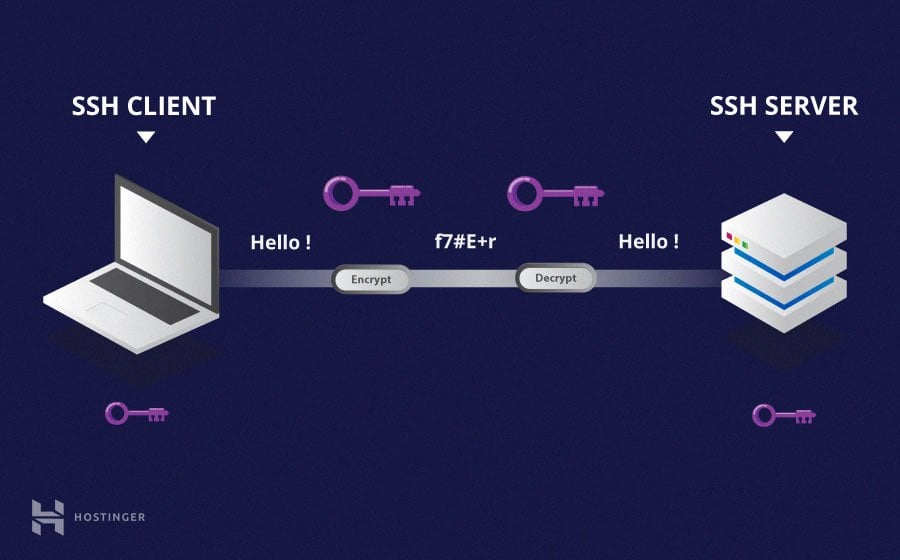What Is Secure Shell (SSH) In The IoT Network Windows?
Secure Shell (SSH) is a protocol that has been around for ages, but its importance grows exponentially in today’s interconnected world, especially in IoT networks. Imagine this: your smart fridge, thermostat, and security cameras all need secure communication to prevent hackers from sneaking in. That’s where SSH comes into play. It’s like a digital bouncer at a club, ensuring only authorized people get access while keeping the bad guys out. But what exactly is SSH, and why is it so crucial for IoT networks running on Windows? Let’s dive deep into this tech marvel.
Nowadays, with billions of devices connected to the internet, security is not just an option—it’s a necessity. SSH acts as the backbone of secure communication, especially when dealing with IoT devices. Whether you’re managing a server or configuring smart devices, SSH ensures your data stays safe and your network remains intact. So, if you’re wondering how SSH fits into the IoT puzzle, you’re in the right place.
In this article, we’ll break down everything you need to know about SSH in IoT networks, particularly on Windows systems. From understanding its core functionalities to exploring its role in securing your smart devices, we’ve got you covered. So, grab a coffee, sit back, and let’s unravel the secrets of SSH together.
Read also:Rick Knudsen Today The Untold Journey Of A Man Who Shaped Modern Media
Understanding Secure Shell (SSH): A Beginner’s Guide
What Exactly is SSH?
Let’s start with the basics. Secure Shell, or SSH, is a cryptographic network protocol designed to provide secure communication over unsecured networks. Think of it as a secret language that only you and your devices understand. When you connect to an IoT device using SSH, all the data exchanged between your computer and the device is encrypted, making it nearly impossible for hackers to intercept or tamper with.
SSH isn’t just about encrypting data; it also offers authentication mechanisms to ensure that only authorized users can access the network. This means even if someone manages to intercept your connection, they won’t be able to log in without the proper credentials. Cool, right?
Why SSH is Crucial for IoT Networks
In the world of IoT, where every device is a potential entry point for hackers, SSH serves as a fortress. It secures remote access to IoT devices, ensuring that no unauthorized user can meddle with your smart home setup. Whether you’re managing a fleet of IoT devices from your office or controlling your home automation system from your phone, SSH keeps everything under lock and key.
Here’s a quick list of why SSH is so important:
- Encryption of all data transmissions
- Strong user authentication
- Protection against man-in-the-middle attacks
- Secure file transfers
- Remote command execution
With these features, SSH is the go-to solution for securing IoT networks, especially when integrated with Windows systems.
How SSH Works in IoT Networks
The Anatomy of SSH Connections
When you establish an SSH connection, several things happen behind the scenes. First, your client (your computer or smartphone) sends a request to the server (the IoT device). The server then responds with its public key, which your client uses to verify the server’s identity. Once verified, both parties generate a shared secret key to encrypt all future communications.
Read also:Countess Vaughn The Rise Of A Multifaceted Talent In Hollywood
This process ensures that even if someone intercepts the connection, they won’t be able to decipher the data without the secret key. It’s like having a private conversation in a crowded room where no one else can understand what you’re saying.
SSH in Windows IoT Networks
Windows has fully embraced SSH, making it easier than ever to secure your IoT devices. Whether you’re running Windows 10 IoT Core or Windows Server, SSH is there to protect your network. The integration is seamless, allowing you to manage your devices remotely without compromising security.
Here’s how SSH works in a typical Windows IoT setup:
- Install and configure the SSH server on your IoT device
- Connect to the device using an SSH client on your Windows machine
- Execute commands or transfer files securely
With Windows’ robust support for SSH, securing your IoT network has never been easier.
Securing IoT Networks with SSH
Best Practices for Implementing SSH
While SSH is a powerful tool, it’s only as secure as you make it. Here are some best practices to ensure your IoT network remains impenetrable:
- Use strong, unique passwords or public-key authentication
- Disable root login to prevent unauthorized access
- Regularly update your SSH server and client software
- Monitor login attempts for suspicious activity
- Restrict access to specific IP addresses if possible
By following these guidelines, you can significantly reduce the risk of unauthorized access to your IoT devices.
SSH vs. Other Security Protocols
When it comes to securing IoT networks, SSH isn’t the only option. Protocols like SSL/TLS and HTTPS also play a vital role. However, SSH stands out due to its focus on secure remote access. While SSL/TLS is great for securing web traffic, SSH excels in securing shell sessions and file transfers.
Here’s a quick comparison:
- SSH: Best for secure remote access and file transfers
- SSL/TLS: Ideal for securing web traffic
- HTTPS: Perfect for securing websites
Depending on your needs, you might use a combination of these protocols to create a comprehensive security strategy.
SSH in Action: Real-World Examples
Case Study: Securing a Smart Home Network
Let’s take a look at a real-world example. Imagine you have a smart home network with multiple IoT devices, including cameras, thermostats, and lighting systems. By implementing SSH, you can securely manage all these devices from a central location, ensuring that no one else can access them without your permission.
Here’s how it works:
- Install an SSH server on each IoT device
- Connect to the devices using an SSH client on your Windows PC
- Execute commands to configure and monitor the devices
This setup not only enhances security but also simplifies management, saving you time and effort.
SSH in Industrial IoT Applications
In industrial settings, SSH plays a critical role in securing communication between machines and control systems. Whether you’re managing a manufacturing plant or monitoring remote sensors, SSH ensures that all data exchanges remain secure and reliable.
Here’s an example:
- Install SSH servers on all industrial IoT devices
- Connect to the devices from a centralized control center
- Monitor and control the devices in real-time
With SSH, industrial IoT networks can operate efficiently while maintaining top-notch security.
Common Challenges with SSH in IoT Networks
Managing Multiple Devices
One of the biggest challenges with SSH in IoT networks is managing multiple devices. As the number of devices grows, so does the complexity of maintaining secure connections. To tackle this issue, consider using SSH key management tools that streamline the process of managing keys across your network.
Dealing with Limited Resources
Many IoT devices have limited processing power and memory, making it challenging to run resource-intensive security protocols like SSH. However, advancements in technology have made it possible to implement lightweight versions of SSH that work seamlessly on these devices.
Future Trends in SSH and IoT Security
The Role of Quantum Computing
As quantum computing becomes more prevalent, traditional encryption methods like SSH may become vulnerable. Researchers are already working on quantum-resistant algorithms to ensure that SSH remains secure in the future.
AI-Driven Security Solutions
Artificial intelligence is revolutionizing the way we approach cybersecurity. By leveraging AI, SSH systems can detect and respond to threats in real-time, providing an additional layer of protection for IoT networks.
Expert Tips for Maximizing SSH Security
Use Two-Factor Authentication
Two-factor authentication (2FA) adds an extra layer of security to your SSH connections. Even if someone manages to obtain your password, they won’t be able to log in without the second factor, such as a one-time code sent to your phone.
Regularly Audit Your SSH Configurations
Regular audits of your SSH configurations can help identify potential vulnerabilities before they’re exploited. Keep an eye on login attempts, failed connections, and any other suspicious activity.
Conclusion
Secure Shell (SSH) is a vital component of any IoT network, especially when integrated with Windows systems. By understanding how SSH works and implementing best practices, you can ensure that your devices remain secure and your data stays safe. Whether you’re managing a smart home or overseeing an industrial IoT network, SSH provides the tools you need to protect your digital assets.
So, what are you waiting for? Start exploring the world of SSH today and take your IoT security to the next level. Don’t forget to leave a comment below and share this article with your friends and colleagues. Together, let’s make the internet a safer place!
Table of Contents
- Understanding Secure Shell (SSH): A Beginner’s Guide
- How SSH Works in IoT Networks
- Securing IoT Networks with SSH
- SSH in Action: Real-World Examples
- Common Challenges with SSH in IoT Networks
- Future Trends in SSH and IoT Security
- Expert Tips for Maximizing SSH Security
- Conclusion


